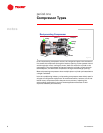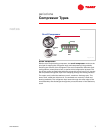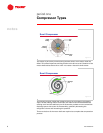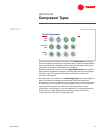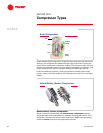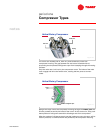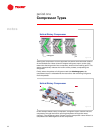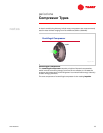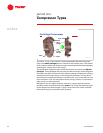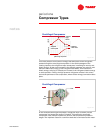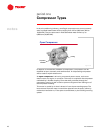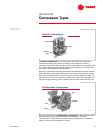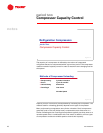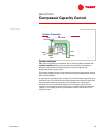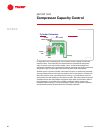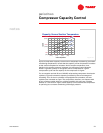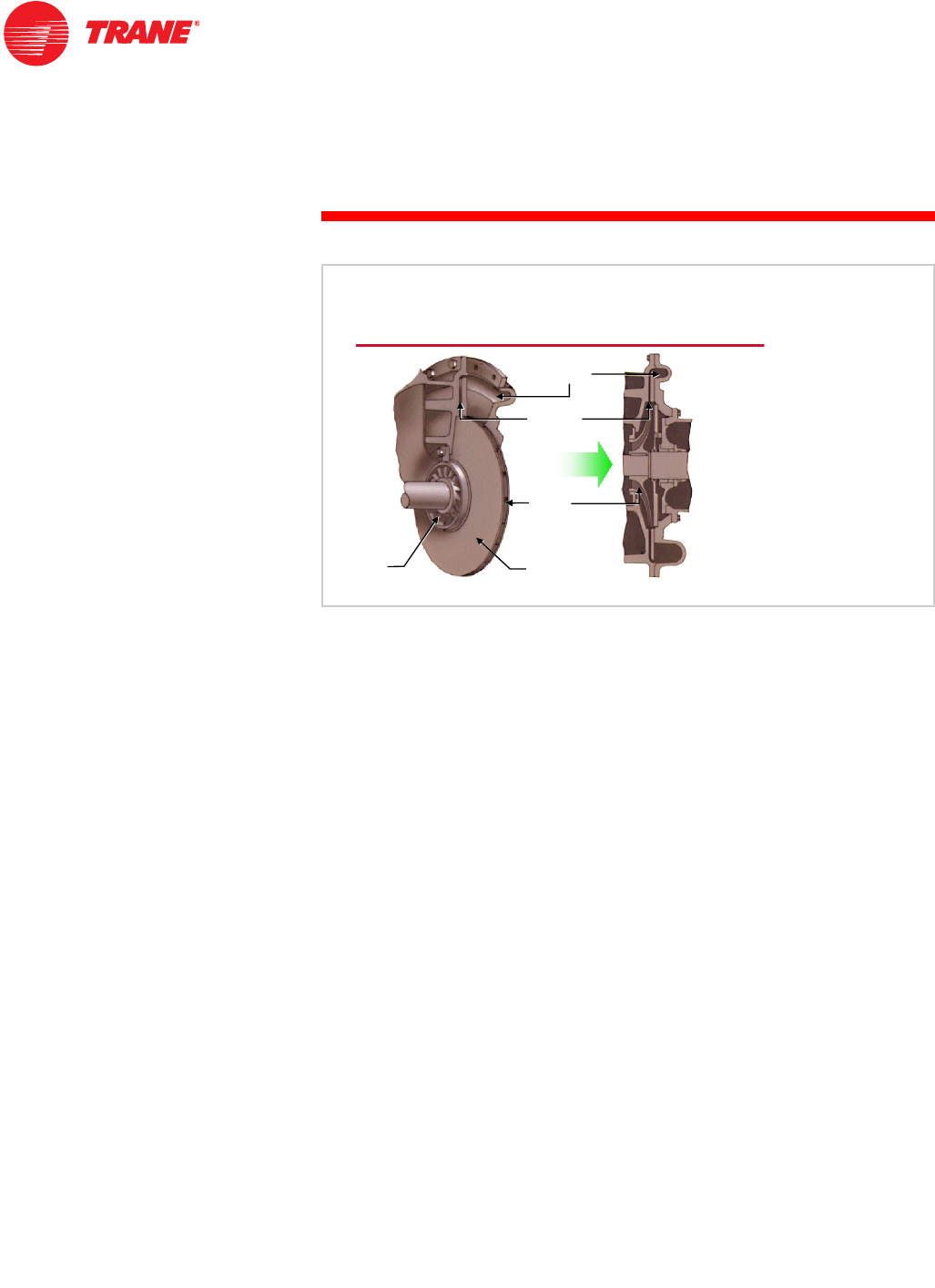
14 TRG-TRC004-EN
notes
period one
Compressor Types
The center, or eye, of the impeller is fitted with blades that draw refrigerant
vapor into radial passages that are internal to the impeller body. The rotation
of the impeller causes the refrigerant vapor to accelerate within these passages,
increasing its velocity and kinetic energy.
The accelerated refrigerant vapor leaves the impeller and enters the diffuser
passages. These passages start out small and become larger as the refrigerant
travels through them. As the size of the diffuser passage increases, the velocity,
and therefore the kinetic energy, of the refrigerant decreases. The first law of
thermodynamics states that energy is not destroyed—only converted from one
form to another. Thus, the refrigerant’s kinetic energy (velocity) is converted to
static energy (or static pressure).
Refrigerant, now at a higher pressure, collects in a larger space around the
perimeter of the compressor called the volute. The volute also becomes larger
as the refrigerant travels through it. Again, as the size of the volute increases,
the kinetic energy is converted to static pressure.
&HQWULIXJDO&RPSUHVVRU
YROXWH
YROXWH
GLIIXVHU
GLIIXVHU
SDVVDJHV
SDVVDJHV
UDGLDO
UDGLDO
LPSHOOHU
LPSHOOHU
SDVVDJHV
SDVVDJHV
EODGHV
EODGHV
LPSHOOHU
LPSHOOHU
Figure 21



